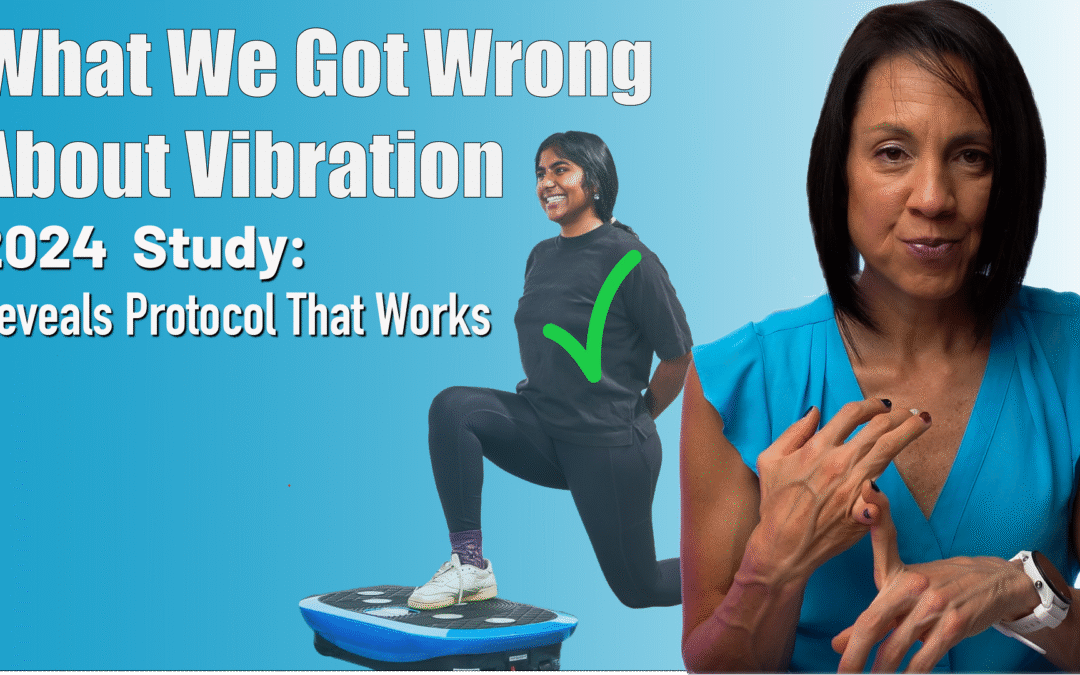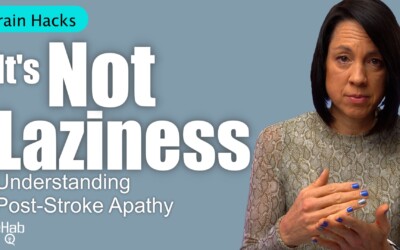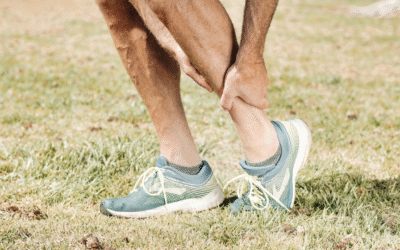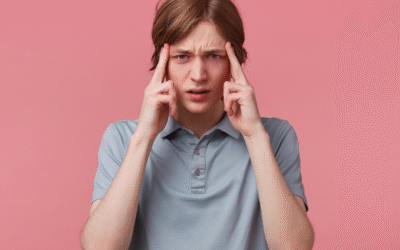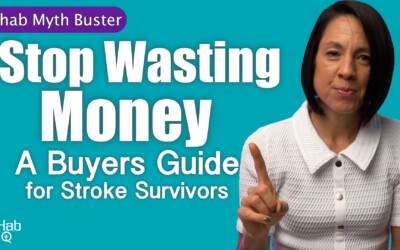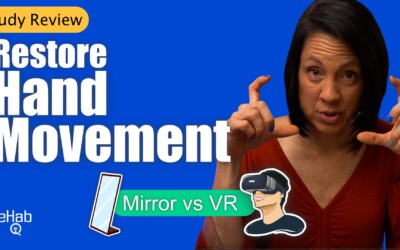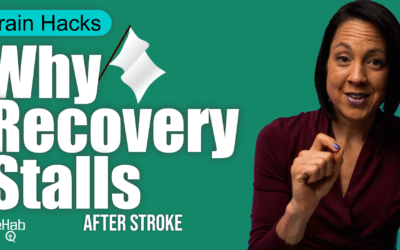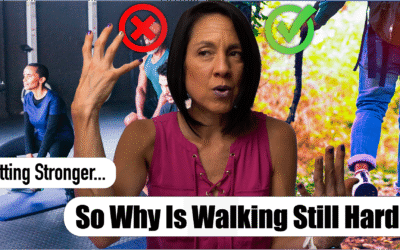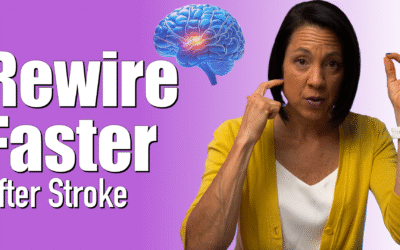It Just Vibrates… So Why Are Stroke Survivors Getting Better?
The Truth Behind the Research
When vibration plates first became popular, they reminded many of us of those old 1980s machines that promised to “shake” the fat away. Naturally, the skepticism was real.
But lately, vibration plates are being taken more seriously in the world of neurologic rehab, especially for people recovering from stroke. So… do they actually work?
Let’s break down the research, the science, and most importantly, how this applies to your recovery.
What Are Muscle Spindles & Why Do They Matter?
Before we dive into how vibration plates might help, we need to understand muscle spindles. These are specialized sensory receptors located inside your muscles.
These spindles detect:
- Muscle lengthening
- Speed of stretch
When a muscle stretches too fast (say, you’re falling), the muscle spindle sends an immediate signal to contract that muscle to protect you. At the same time, it also inhibits the opposing (antagonist) muscle, helping your body respond quickly and smoothly.
But that’s not all. Muscle spindles also send a signal up to your brain, telling it where your limb is in space. And the brain, in turn, can override reflexive responses by sending inhibitory signals back down to reduce involuntary movements.
What Happens After a Stroke?
After a stroke, The brain’s control over reflexes weakens. Muscle spindles still trigger automatic contractions, but the brain’s “braking system” is impaired. This can result in spasticity, abnormal tone, and difficulty moving smoothly.
Without that “braking system” from the brain, the muscle spindle reflex kicks in unchecked. That’s why a small movement, like tapping your foot on the ground, might cause an exaggerated response.
How Do Vibration Plates Help?
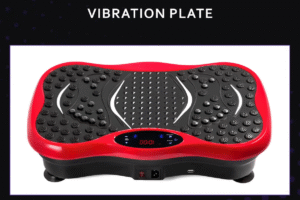
Vibration plates work by stimulating the same nerve fibers involved in the muscle spindle reflex, particularly the 1A sensory nerves. Potential Benefits include:
- Inhibit spasticity: Continuous vibration may “wear out” the nerve (nerve “fatigue”), reducing its reflexive contractions.
- Enhance limb awareness: Vibration sends signals to the brain, potentially improving body awareness and coordination.
- Promote movement: Stimulating sensory nerves might lead to increased muscle activation and better motor output.
💡 Bonus Tip: This also explains why massage guns may reduce spasticity when applied to the opposite (antagonist) muscle group.
What the Research Shows
2019 Meta-Analysis
A large meta-analysis reviewed multiple studies involving vibration plates and stroke rehab. Here’s what they found:
✅ Reduced spasticity
❌ No significant improvements in balance, gait, or postural control
The catch? Most studies involved passive use of vibration plates. Participants were just standing or sitting without doing specific exercises.
2024 Study: Game-Changer
This newer study compared two groups:
- Both did the same conventional rehab program, such as NDT (neurodevelopmental techniques), balance work, strength training, and stepping drills.
- The only difference: one group did the exercises on a vibration plate.
✅ Both groups improved
💥 But the vibration plate group improved more, especially in balance, strength, and gait.
Why the difference? Movement-based exercises done with vibration likely enhanced sensory input and motor output, essentially “supercharging” the brain-body connection.
How You Can Apply This to Your Rehab
1. Don’t Just Stand on It
Use the plate during active movement. Try squats, weight shifts, stepping, or static standing with eyes closed. Passive standing won’t cut it if your goal is to improve function.
2. Target Spasticity
For lower leg spasticity (like pointing toes or foot drop), standing on the plate is more effective than sitting.
You can also try a massage gun on opposing muscle groups (e.g., stimulating the triceps to relax the biceps). The mechanism here is similar and may offer additional benefits.
3. Build a Plan Around It
The “conventional therapy” used in the 2024 study included:
- NDT-based posture control
- Leg strengthening (squats, lunges, quad sets)
- Static & dynamic balance tasks
- Visual deprivation exercises
- Stepping drills
Even without a vibration plate, this program showed meaningful improvements. If you’re not doing these now, consider adding them to your plan or show this to your therapist.
Final Takeaways
✅ Vibration plates can reduce spasticity
✅ When paired with movement-based therapy, they may boost gains in balance, gait, and strength
❌ Passive standing or sitting alone won’t give you the full benefit
If you’re looking for an affordable way to enhance your rehab, a vibration plate combined with the right exercises might be your missing piece.
👉 I’ve linked the vibration plate I personally use here. It meets the 20–30 Hz frequency used in the research.
Tools to Supercharge Your Recovery
Want a comprehensive rehab plan without bouncing between therapists or feeling lost?
Our Gold Membership Program includes:
- Ad free videos and handouts
-
Full access to 350+ home rehab exercise videos
-
Monthly Q&A sessions and webinars
-
A private discussion board I check daily
👉 Learn more at Rehab HQ
📞 Or schedule a discovery call to find out if it’s right for you.
Articles you may be interested in
The 2 Key Nutrients for Brain Recovery After Stroke
Are You Missing the Nutrients That Help the Brain Heal Faster? https://youtu.be/8M50j4Tmncw If you’re recovering from a stroke, you already know the process can feel slow, tiring, and confusing. You work hard on your exercises… but sometimes it still feels like your...
Stroke Recovery and Apathy: What It Is and How to Overcome It
What’s Really Going On When Motivation Disappears After Stroke Recovering from a stroke is a journey that requires strength, patience, and persistence. But for many stroke survivors, the hardest part isn’t weakness, fatigue, or memory loss. It’s something less visible...
Spasticity or Weakness? Understanding Your Stroke Symptoms
How Can You Tell If It’s Spasticity or Weakness After Stroke? https://youtu.be/3QR9D4rBNhc If you’ve had a stroke, you’ve probably heard a few of these words tossed around: spasticity, weakness, stiffness, foot drop. They might all sound similar, but they each tell a...
Master Ankle Mobility: Exercises for Better Walking
Ankle Mobility Exercises to Boost Balance and Walking Ankle stiffness is one of the most common issues people face after a stroke or any neurologic injury. It can make walking harder, cause your toes to catch, or even affect your balance. But here’s the thing,...
Improve Focus and Attention After Stroke
Stroke Recovery: How to Regain Focus and Attention Faster https://youtu.be/ul0wUgXravo When most people think about recovery after a neurologic injury like a stroke, brain injury, or MS, they often focus on the physical side. Strength. Repetitions. Muscle activation....
Should You Spend Money on Stroke Rehab Devices?
Are Trendy Rehab Treatments and Devices Worth It? Here's My Honest Take https://youtu.be/T69LavHLdIQ Should you be spending your hard-earned money on all those rehab devices popping up in your social media feed? And if so, which one is actually worth it? The truth?...
Restore Hand Movement After Stroke with Mirror Therapy
Mirror Therapy & VR: Stroke Recovery for the Hand https://youtu.be/OeThZMwJt40 If you’ve lost movement in your arm after a stroke, you’ve probably wondered: “Is my arm just weak, or is something deeper going on in my brain?” That’s not because your muscles forgot...
Stroke Recovery Plateau: What to Do
Why Stroke Recovery Stalls and How to Push Through Recovery may feel stuck, but progress is still possible. Here’s how to keep improving after a plateau. https://youtu.be/w6xZZpx7tDY Recovering from a stroke or neurologic injury can feel overwhelming. Walking,...
Why Your Stroke Exercises Aren’t Helping and How to Fix It
Stroke Recovery Tips: When Exercises Don’t Seem to Work https://youtu.be/9r06T9gtsYc Is it possible to be making progress after a stroke or neurologic injury and still feel like your movement is getting stiffer, heavier or just plain harder?Absolutely. And let me tell...
Boost Stroke Recovery: 3 Brain Habits That Actually Work
Want to Rewire Your Brain Faster After Stroke? Try These 3 Habits https://youtu.be/iFcjDtHrrwM If you’ve been on this neuro-recovery journey, you know it can feel like progress is slow. You do your exercises, you follow instructions, but sometimes your brain seems…...

